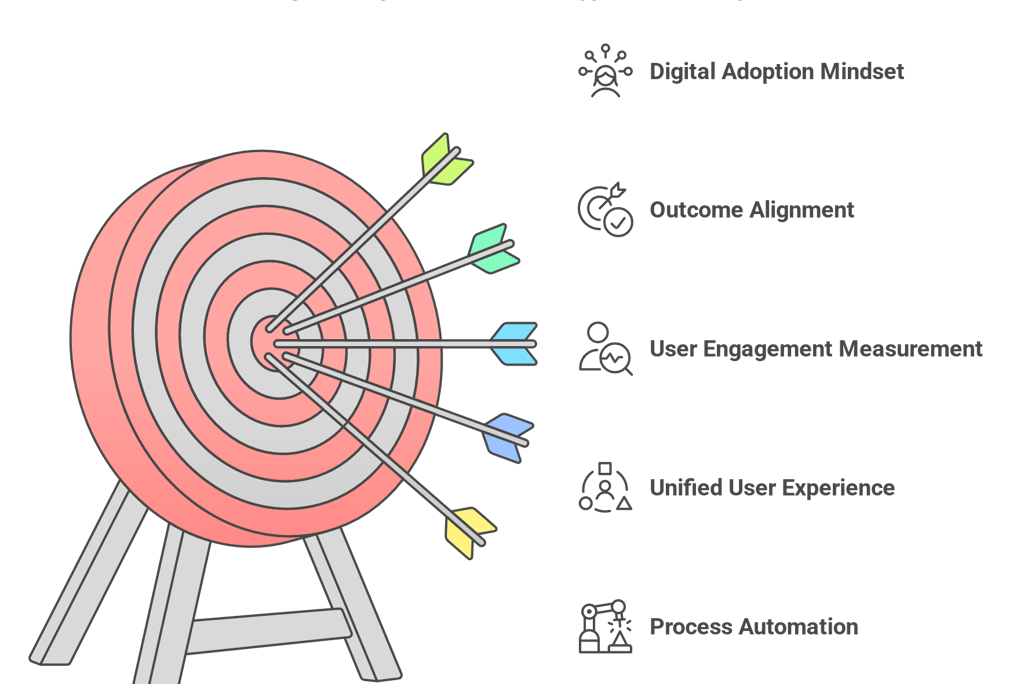The Transformative Power of AI and Large Language Models in Digital Adoption
2/10/20252 min read


My post content
In today's rapidly evolving digital landscape, organizations are investing heavily in technology to enhance efficiency and maintain a competitive edge. However, a significant number of these investments fail to deliver the expected returns due to underutilization and fragmented adoption strategies. Enter the concept of HyperProductivity—a transformative approach that not only optimizes digital tool usage but also redefines organizational workflows to achieve unprecedented levels of efficiency and innovation.
Understanding HyperProductivity
HyperProductivity represents an aspirational state where employees can seamlessly utilize any application, automating non-essential tasks to focus on impactful work. This involves integrating technologies into cohesive, streamlined workflows, enabling organizations to operate at an accelerated pace. According to WalkMe, enterprises with a mature approach to digital adoption save an average of $4.9 million per month compared to those that don't fully embrace these methods.
The Imperative for Digital Adoption
Despite global IT spending reaching $5.1 trillion and software investments growing by 13.8% in recent years, many enterprises struggle with underutilized applications and inefficient workflows. On average, organizations underestimate the number of applications they use by a factor of ten, leading to a lack of visibility and control over their tech stack. This "application visibility gap" hinders effective digital adoption and contributes to significant productivity losses.
Building a Digital Adoption Mindset
To achieve HyperProductivity, organizations must cultivate a digital adoption mindset that encompasses several key pillars:
Evaluating Technology Use: Conducting rigorous analysis of current digital tool utilization to inform future tech implementations.
Process Automation: Employing automation and AI to enhance efficiency and user experience, resulting in streamlined workflows.
Unified User Experience: Creating a cohesive digital workspace where applications integrate seamlessly, reducing the learning curve and increasing adoption rates.
User Engagement Measurement: Utilizing data to understand employee interactions with digital tools, informing training and support strategies.
Outcome Alignment: Ensuring that technology efforts are directed toward specific business goals, providing clear purpose and expected outcomes for digital initiatives.
Engagement-Boosting Content: Developing content that resonates with users, fostering a culture of continuous learning and improvement within the workflow.
The Role of AI and Large Language Models (LLMs)
Artificial Intelligence, particularly Large Language Models (LLMs), plays a pivotal role in advancing digital adoption strategies. LLMs can enhance user experiences through AI-generated recommendations, in-app guidance, conversational interactions with software, and automated workflows. For instance, AI agents powered by LLMs are capable of breaking down high-level goals into actionable steps and executing them autonomously, similar to advanced digital assistants. This evolution of AI is poised to significantly enhance productivity and decision-making within organizations.
Achieving HyperProductivity
Organizations that fully embrace digital adoption best practices are well-positioned to reach a state of HyperProductivity. Benefits include higher application utilization rates, significant time savings for employees, and increased return on digital investments. By expanding digital adoption best practices beyond individual roles or departments to encompass the entire organization, enterprises can transform their approach to work at every level.
Conclusion
As the digital landscape continues to evolve, achieving HyperProductivity through a mature digital adoption strategy is not just advantageous but essential. By leveraging AI and LLMs, organizations can streamline workflows, enhance user experiences, and unlock new levels of efficiency and innovation. The journey toward HyperProductivity requires a comprehensive approach that aligns technology with business goals, fosters user engagement, and continuously adapts to emerging technological advancements.


Innovate
About us
Connect
Explore
info@cognivale.com
© 2025. All rights reserved.
Contact us
FAQ
Terms
